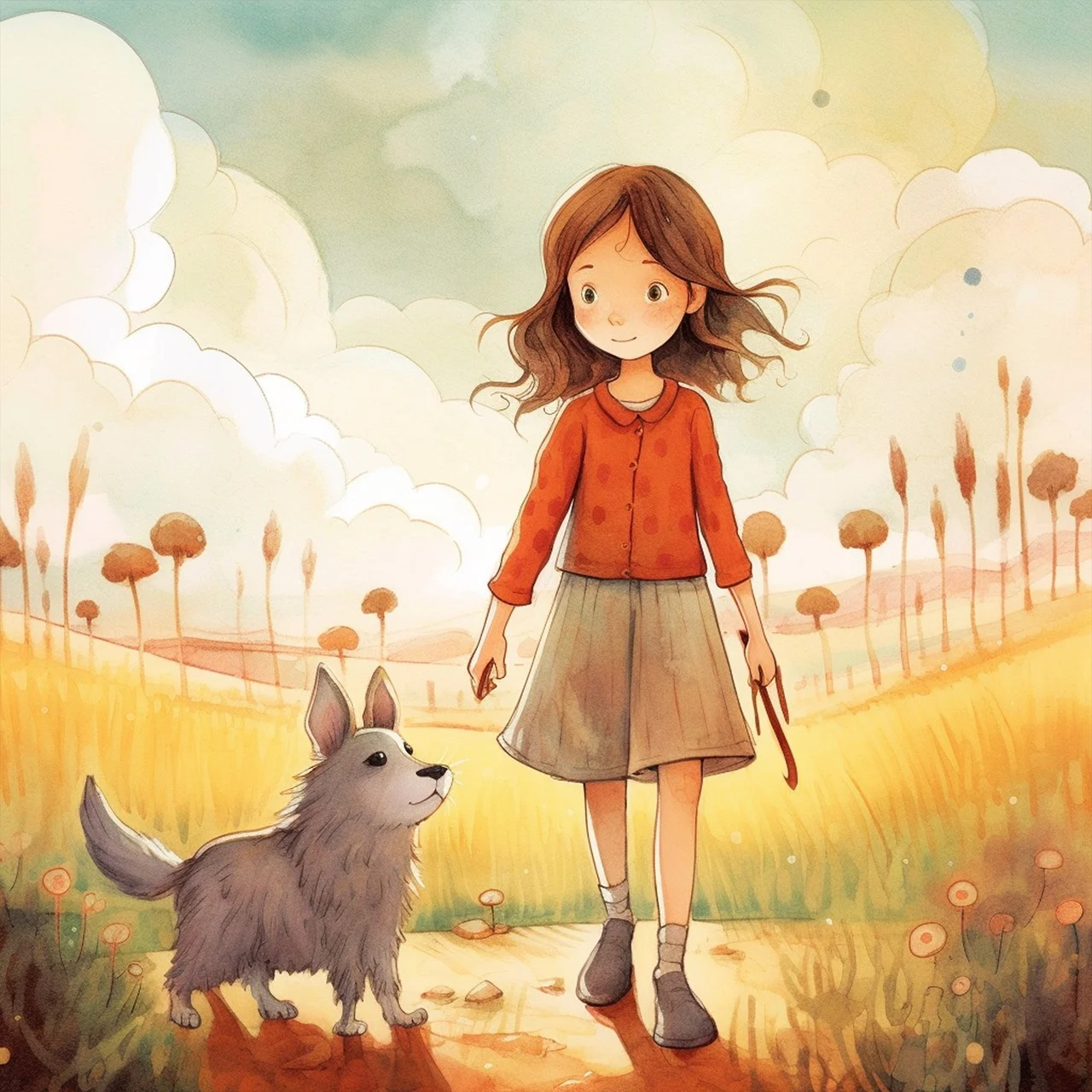Introduction
Children’s book illustration is a captivating and diverse field that plays a pivotal role in bringing stories to life for young readers. These illustrations serve as windows to the imagination, sparking curiosity, fostering creativity, and igniting a love for storytelling in children’s hearts. In this comprehensive exploration, we’ll embark on a delightful journey through various types of children’s book illustration, each with its unique style, purpose, and charm. From whimsical watercolors to vibrant digital art, these illustrations leave an indelible mark on the world of children’s literature.
Traditional Watercolor Illustrations
Traditional watercolor illustrations have a timeless appeal that resonates with both children and adults. They are characterized by:
Soft and Gentle Colors: Watercolors often use pastel shades and soft gradients, creating a warm and inviting atmosphere.
Expressive Brushwork: Artists employ delicate brushwork to convey emotions, capturing the nuances of characters’ expressions.
Handcrafted Feel: The imperfections of watercolor create a unique, handcrafted quality that adds authenticity to the artwork.
Classic Storybooks: These illustrations are often found in classic children’s books, evoking a sense of nostalgia.
Notable Artists: Beatrix Potter (Peter Rabbit), Maurice Sendak (Where the Wild Things Are), and E.H. Shepard (Winnie-the-Pooh).
Bold and Vibrant Digital Illustrations
Digital illustrations have gained popularity in contemporary children’s literature for their bold and vivid visuals. Key features include:
Vibrant Colors: Digital art allows for an extensive color palette, making illustrations visually striking and engaging.
Precise Detailing: Artists can achieve intricate details with precision, enhancing the depth and realism of characters and settings.
Versatility: Digital tools offer flexibility, enabling artists to explore various styles, from cartoonish to hyper-realistic.
Interactivity: Digital illustrations can be integrated into multimedia eBooks, adding an interactive dimension to the reading experience.
Notable Artists: Oliver Jeffers (The Day the Crayons Quit), Chris Van Allsburg (The Polar Express), and Mo Willems (Don’t Let the Pigeon Drive the Bus!).
Whimsical and Playful Collage Art
Collage art is a playful and whimsical form of illustration that delights young readers. Key features include:
Mixed Media: Collages incorporate a mix of materials, such as cut paper, fabric, and found objects, creating a tactile and textured effect.
Imagination Unleashed: These illustrations encourage children to use their imaginations, as they piece together elements to form a cohesive picture.
Interactive Stories: Collages often invite readers to explore hidden details and discover surprises within the artwork.
Eclectic Styles: Collage art can vary widely, from abstract and surreal to charming and folkloric.
Notable Artists: Eric Carle (The Very Hungry Caterpillar), Lois Ehlert (Color Zoo), and Leo Lionni (Swimmy).
Minimalist and Conceptual Illustrations
Minimalist and conceptual illustrations offer a unique, thought-provoking approach to children’s books. Key features include:
Simplicity: These illustrations employ a minimalist style, using basic shapes, lines, and colors to convey ideas and emotions.
Abstract Concepts: Minimalist artwork often explores abstract concepts, encouraging children to contemplate deeper meanings.
Visual Metaphors: Artists use visual metaphors to simplify complex themes, making them accessible to young readers.
Open-Ended Interpretation: Minimalist illustrations invite readers to interpret and engage with the story on their terms.
Notable Artists: Jon Klassen (I Want My Hat Back), Peter H. Reynolds (The Dot), and Donald Crews (Freight Train).
3D and Pop-Up Illustrations
Three-dimensional and pop-up illustrations add a tactile and interactive dimension to children’s books. Key features include:
Dimensional Elements: These illustrations incorporate physical elements that pop off the page, creating a sense of depth and immersion.
Engaging Interactivity: Pop-up books encourage children to interact with the story, turning pages and exploring hidden surprises.
Kinesthetic Learning: 3D illustrations enhance kinesthetic learning, aiding in the development of fine motor skills.
Memorable Experiences: Pop-up books often create cherished childhood memories due to their novelty and wonder.
Notable Artists: Robert Sabuda (Alice’s Adventures in Wonderland Pop-Up Book), David A. Carter (Bugs Pop-Up Book), and Matthew Reinhart (Star Wars: A Pop-Up Guide to the Galaxy).
Realistic and Nature-Centric Art
Realistic and nature-centric illustrations introduce children to the wonders of the natural world. Key features include:
Lifelike Detailing: These illustrations strive for accuracy, depicting animals, plants, and ecosystems with meticulous detail.
Educational Value: Realistic illustrations serve an educational purpose, teaching young readers about biology, ecology, and the environment.
Appreciation for Nature: These illustrations foster an appreciation for the beauty and diversity of the natural world.
Conservation Awareness: Nature-centric children’s books often raise awareness about conservation and environmental issues.
Notable Artists: Steve Jenkins (What Do You Do with a Tail Like This?), Jim Arnosky (All About Frogs), and Nic Bishop (Butterflies and Moths).
Cartoon and Whimsy for Early Readers
Cartoon and whimsical illustrations cater to early readers, offering engaging visuals that aid comprehension. Key features include:
Simple and Expressive Characters: Cartoon-style characters are easy for young readers to identify and emotionally connect with.
Vibrant and Playful Colors: These illustrations use bright and cheerful colors to capture children’s attention and imagination.
Visual Storytelling: Cartoon illustrations rely on visual cues to narrate the story, making them accessible to emerging readers.
Encouraging Confidence: Whimsical illustrations boost early readers’ confidence, making the reading experience enjoyable and accessible.
Notable Artists: Dr. Seuss (The Cat in the Hat), Mercer Mayer (Little Critter series), and Mo Willems (Elephant & Piggie series).
Conclusion
Children’s book illustration is a vibrant and multifaceted domain, where artists harness their creative prowess to imbue young readers’ lives with wonder and enchantment. It encompasses an array of styles and approaches, each weaving its own distinct tapestry of storytelling magic. From the enduring allure of traditional watercolors to the interactive enchantment of pop-up books and the thought-provoking simplicity of conceptual art, every illustration style contributes to a rich and immersive reading experience.
In the realm of children’s literature, these illustrations serve as vital conduits, bridging the written word with the boundless realms of youthful imaginations. They possess the unique power to transform words into vivid images that dance across the pages, creating lasting impressions etched in the hearts of children. As young minds turn the pages, they embark on journeys to fantastical lands, forging connections with characters who become cherished companions.
Traditional watercolors, with their timeless charm and gentle hues, evoke a sense of nostalgia while painting vibrant worlds that beckon exploration. The tactile delight of pop-up books infuses the act of reading with a sense of wonder, as young hands unfurl hidden treasures and secrets. Minimalist conceptual art encourages contemplation, empowering children to uncover layers of meaning and cultivate a deeper understanding of the narrative.
Through the magic of children’s book illustration, the possibilities are indeed boundless. These illustrations ignite the spark of curiosity, nurture creativity, and sow the seeds of a lifelong love for storytelling. They provide a haven where young readers can lose themselves in tales of adventure, empathy, and discovery, and emerge with hearts full of imagination. In this colorful world of illustrated wonder, the joy of exploration knows no bounds, and the thrill of uncovering new horizons is an enduring delight that accompanies readers on their literary adventures throughout life.





